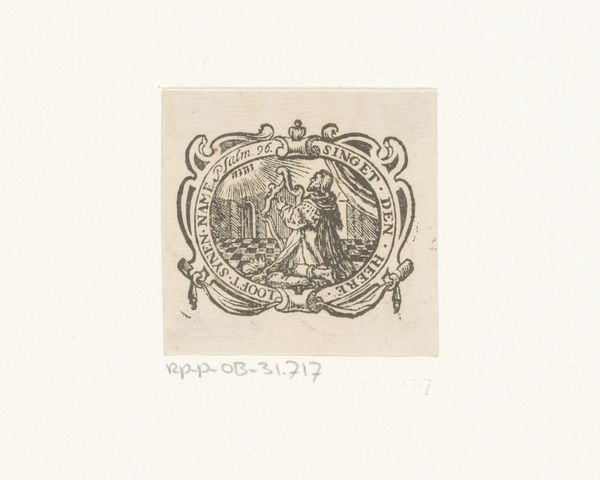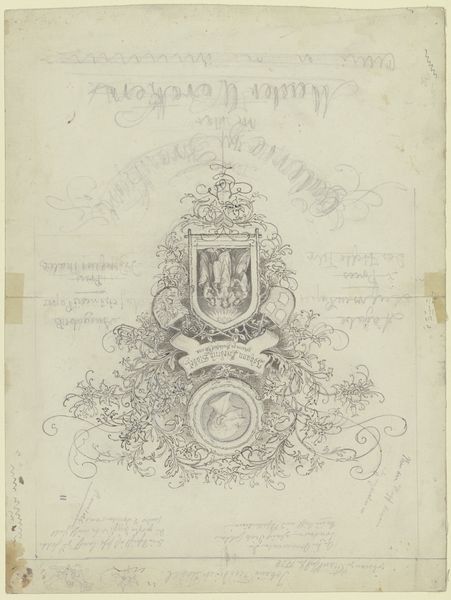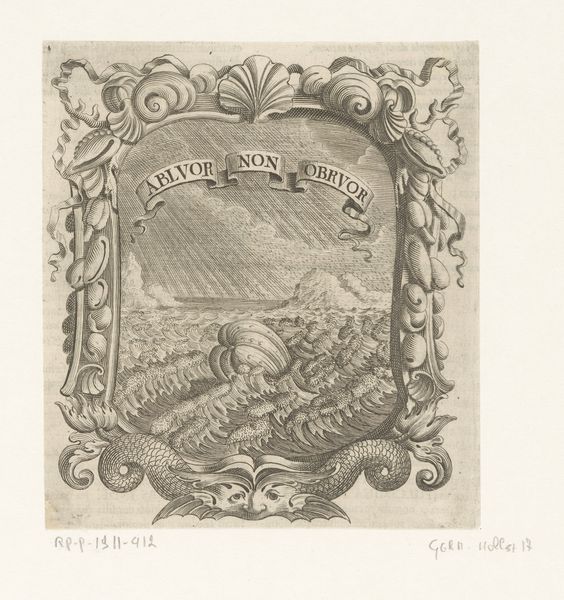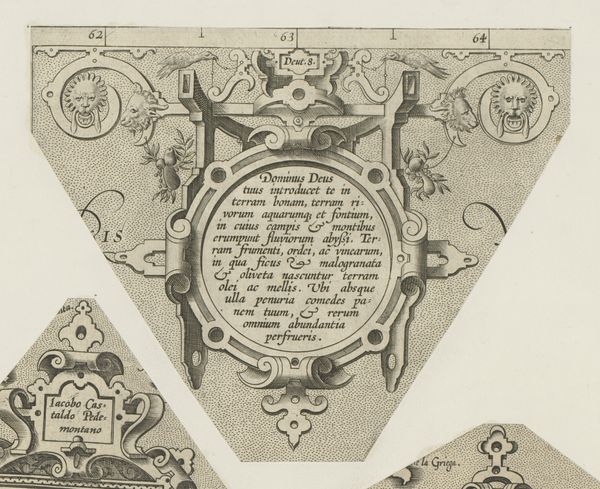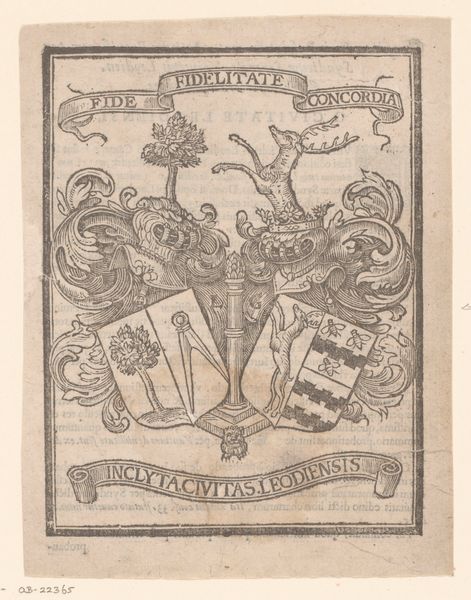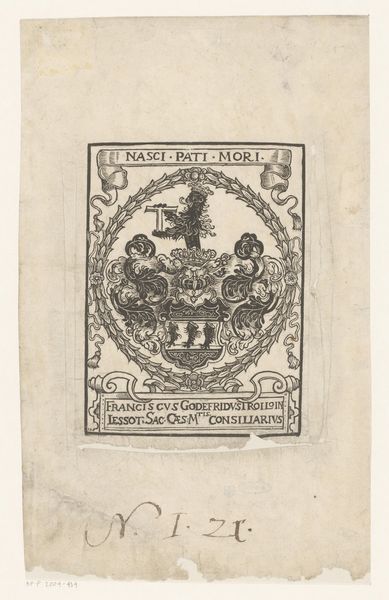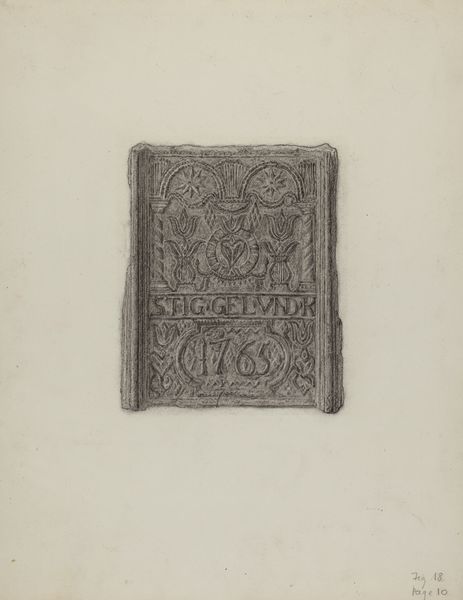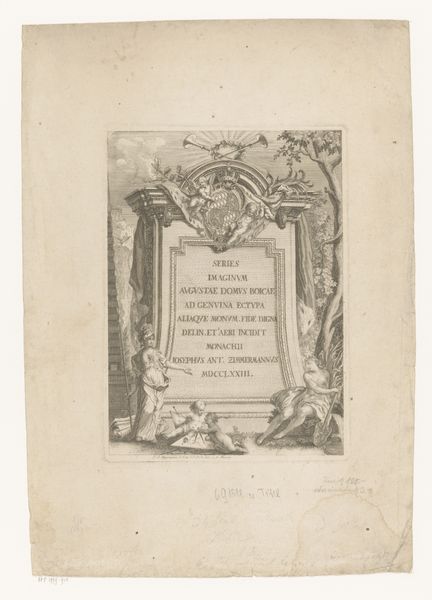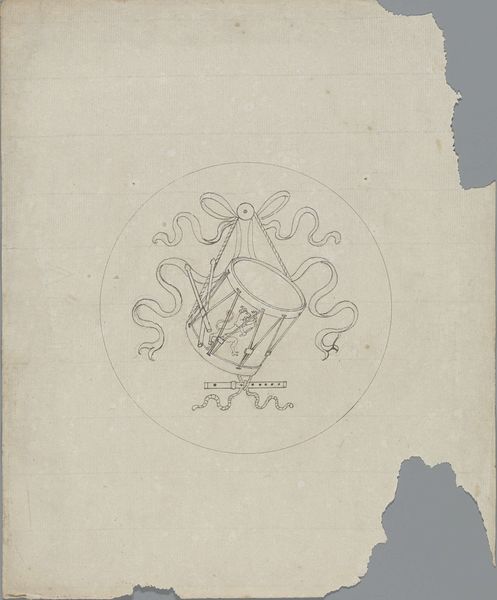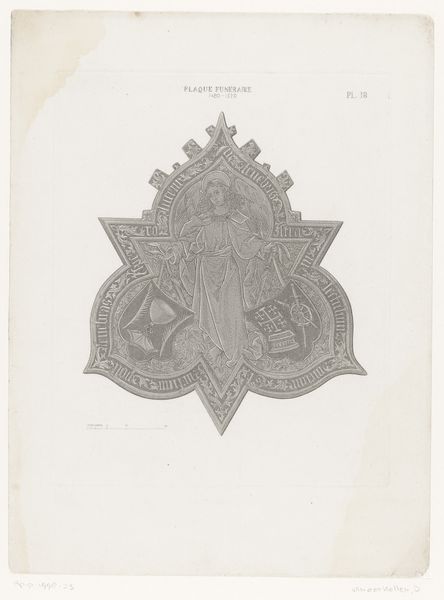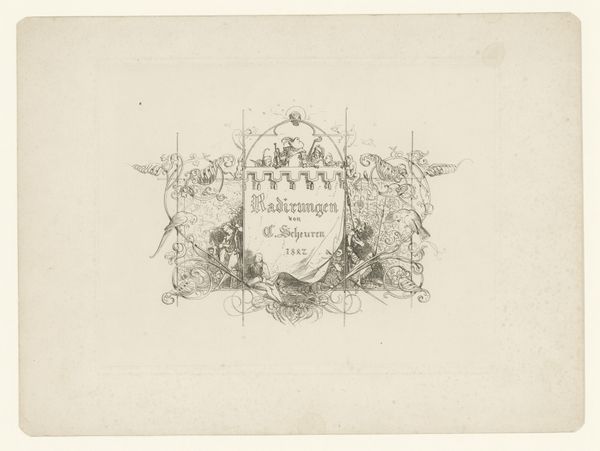
graphic-art, print, engraving
#
portrait
#
graphic-art
# print
#
old engraving style
#
white palette
#
decorative-art
#
engraving
Dimensions: height 108 mm, width 98 mm
Copyright: Rijks Museum: Open Domain
Curator: Looking at this print, "Ex libris van Gustave Charles Antoine Marie van Havre," created by Jean Théodore Joseph Linnig between 1825 and 1891, I immediately notice the precision of the engraving. The delicate lines meticulously construct this coat of arms. Editor: Yes, the craftsmanship is definitely notable, isn’t it? The elaborate ornamentation has a somewhat antiquated feel. I immediately start wondering, who exactly was Gustave Charles Antoine Marie van Havre and what role did wealth and nobility play at that time? Curator: Well, thinking about production, this "ex libris," or bookplate, reveals so much about status, doesn't it? An engraving is a costly thing, reserved for those who have money and influence. Consider the labor that goes into creating something this detailed by hand; a graphic art print designed to signify personal property. Editor: Exactly! Owning books wasn't accessible to everyone; the act of possessing and then marking ownership by means of commissioned art shows how power intersects with material culture. Who gets to own knowledge, to define the narratives—these are critical questions raised by a seemingly small piece. Was this a commission? Curator: It was. Linnig made multiple bookplates like this. To your earlier point, we must consider the system that supported and promoted these practices: patronage, class divisions, and all of it expressed via consumption. What does it say about what van Havre chose to portray about himself? A marker of identity. Editor: The heraldic imagery, the coronet, they reassert a particular hierarchy—one built upon lineage, often achieved via means of oppressive extraction. But it’s interesting to view how personalized tokens and consumer goods served as a tool for both expressing and consolidating that influence. Curator: Indeed, by closely observing such prints and understanding their creation processes, we uncover a great deal about both social realities and artistic practices from past eras. It allows a way of critiquing, by studying a relatively quotidian item in this social context. Editor: Ultimately, this image prompts us to analyze the legacy of power structures and their visible manifestations within our daily life even today. I find myself compelled to seek more about who gets to own and display their narrative in contemporary material terms. Curator: I agree; there is always more context and exploration available in viewing the piece. Editor: Definitely an intriguing object—invites us to see the historical roots and echoes still vibrating within our own world of crafted, consumable materials.
Comments
No comments
Be the first to comment and join the conversation on the ultimate creative platform.
